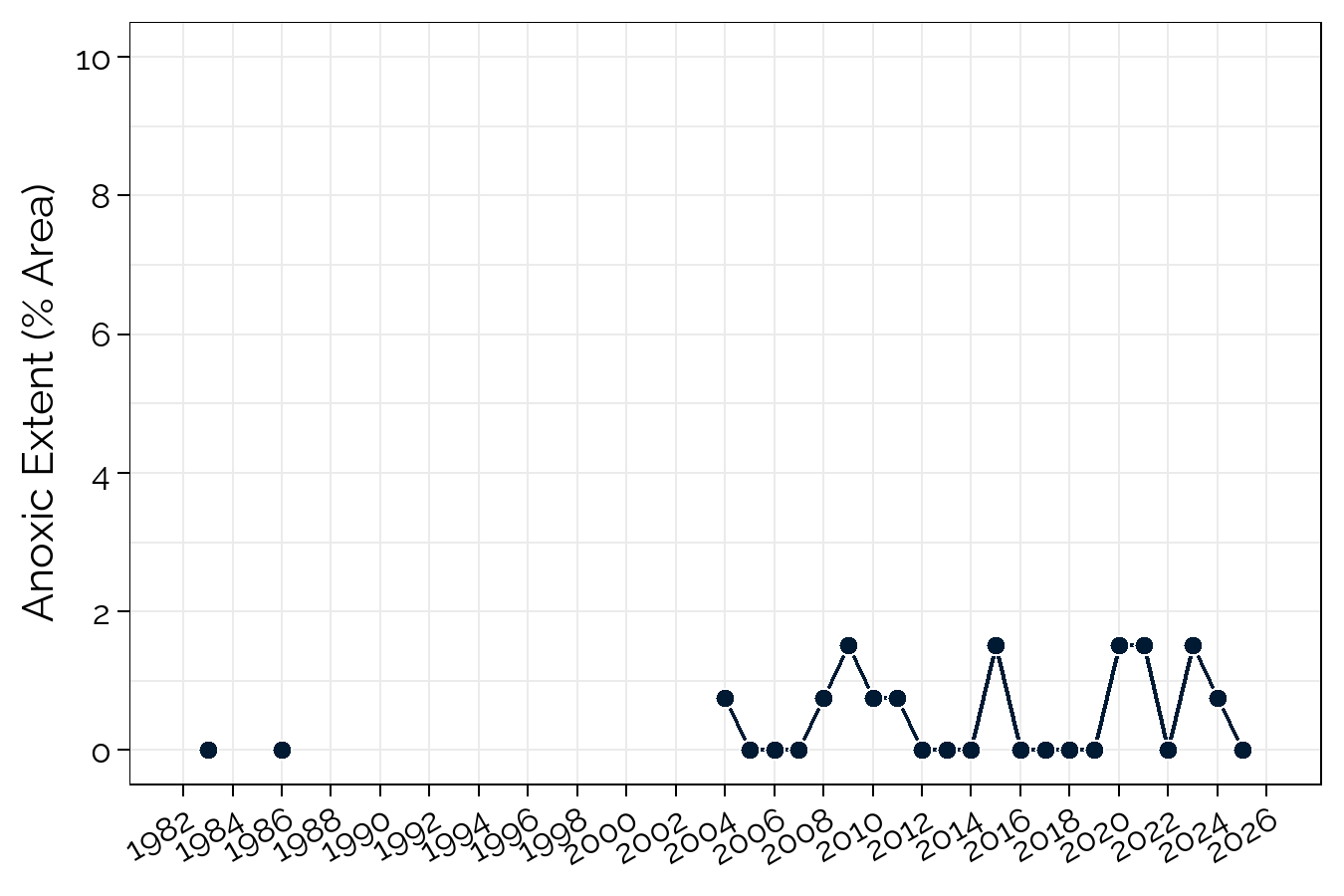Farrington Pond
Located northeast of Kezar Lake's Lower Bay, Farrington Pond is fairly large at 89 acres but shallow at only 13 feet which limits fishing mainly to warm water species such as largemouth bass and chain pickerel. There’s a boat launch at the southeastern end of the pond. Motor propulsion is limited to 6 HP.
Click to enlarge
Farrington Pond (Midas #3200) drains directly to Kezar Lake. Water quality monitoring data have been collected since 1983 at the deepest spot.
water quality
water clarity
Since 1983, water clarity at Farrington Pond has revealed no statistically significant trend, but data collected since 2004 show a steady degradation in water clarity by about 1 meter. However, in 2023, water clarity increased about 1 meter, the highest it’s been since 2004, likely due to the higher water levels.
total phosphorus
Since 1983, total phosphorus at Farrington Pond has revealed no statistically significant trend. Year-to-year variation in total phosphorus (10 to 20 ppb) is large at Farrington Pond, which also has the highest mean annual total phosphorus of all the ponds. Farrington Pond is highly susceptible to internal loading of phosphorus due to its shallow depth, where disturbance of bottom sediments can release phosphorus into the water column.
chlorophyll-a
Since 1983, chlorophyll-a at Farrington Pond has revealed no statistically significant trend, and typically experiences the highest annual concentration of chlorophyll-a of the other ponds. Sampling years 2005, 2011, and 2015 saw a marked rise in chlorophyll-a. Nutrient-rich runoff entering the pond during wetter years, combined with warmer air temperatures, can fuel algae growth. Chlorophyll-a generally increases with increasing total phosphorus for most years at Farrington Pond.
anoxic extent
Dissolved oxygen profiles show good oxygenation throughout the water column over the collection period, with some anoxia at the bottom. The extent of anoxia is overall excellent at Farrington Pond (affecting <10% of pond area). Dissolved oxygen at depth should continue to be monitored closely in the future.
temperature
The volume-weighted average surface water temperature for the top 2 meters does not show a statistically significant trend over the entire record, but may be increasing (degrading) in the last decade.
ph
Since 2004, pH at Farrington Pond has revealed no statistically significant trend. Mean annual pH falls within acceptable ranges for aquatic life. Low alkalinity makes Farrington Pond susceptible to changes in pH, particularly from acidic deposition in the form of rain or snow, which can jeopardize the health of freshwater fish species.
total alkalinity
Since 1986, total alkalinity at Farrington Pond has revealed no statistically significant trend, unlike the other ponds that largely show degrading trends (and may be improving in the last 10 years). The region has naturally-low alkalinity (or buffering capacity) as a result of its contributing geology (i.e., granite) that lacks carbonates, bicarbonates, and carbonic acid.
color
Since 1983, color at Farrington Pond has revealed no statistically significant trend, though year-to-year variation is large (8 to 23 PCU). Color is highly related to summer precipitation; wetter years show higher color as more materials are washed off the landscape to the lake.









